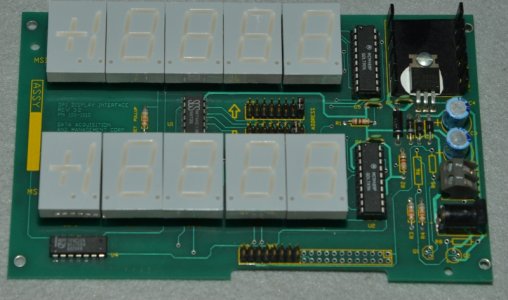Quite some time ago, I got introduced to the Arduino by reading a thread about @YYCHM adding an RPM Readout to his mill. Craig inspired me.
Microcontrollers are not new to me. I've spent a large part of my career using them and their sensors in the automotive world. I also spent time with PICS, the 8748, and the Basic Stamp. But the Arduino was new to me - I'd heard of it but never played with one.
On the strength of that thread and my desire for an RPM Readout on my mill, I bought an Arduino Nano and an LCD display. Sadly, I never actually used them. When I bought the DRO for my mill, it had a built in RPM display. So that was that. The Arduino started to gather dust just like so many other projects of mine.
Recently, I got covid and ended up in bed - bored out of my mind. Hey, says I to myself, what a great time to read up on the Arduino! And so I did.
Yesterday, I installed the new 2.0 IDE and connected my Arduino Nano to my desktop PC in the house and fired it up! Sooooo many problems. Can't connect, upload failed, etc etc. But one-by-one I clubbed them to death. Turns out the default comm port is wrong - easy fix. But still no joy. It turns out my Nano came with the old bootloader. Switched to the nano with original bootloader and problem solved. Last night I successfully uploaded my first program - blinking LED. Not exactly a huge program, but it worked! Then I played around with the blink timing and did a small program to play an "SOS" sequence of blinking.
Now I am hooked! Just picture an old man smiling over a blinking LED..... I know, it's pathetic but hey, I'm not ashamed to admit it!
I think I will do an RPM display for my lathe..... This will be more challenging. Fortunately, @whydontu has already written some first rate code for that.
I could also plan to improve on whydontu's code by playing with direct processor and register access coding. But before I run, I gotta walk. So I'm gunna set that goal aside for a little while.
Perhaps first I should play around with a few other simpler projects. First some programs that just exercise the device without add-on electronics, and then maybe dig out my breadboards and fiddle around with some additional electronics and maybe even some relays for motor and device control.
I welcome fun suggestions.
Some good can even come from Covid.
Microcontrollers are not new to me. I've spent a large part of my career using them and their sensors in the automotive world. I also spent time with PICS, the 8748, and the Basic Stamp. But the Arduino was new to me - I'd heard of it but never played with one.
On the strength of that thread and my desire for an RPM Readout on my mill, I bought an Arduino Nano and an LCD display. Sadly, I never actually used them. When I bought the DRO for my mill, it had a built in RPM display. So that was that. The Arduino started to gather dust just like so many other projects of mine.
Recently, I got covid and ended up in bed - bored out of my mind. Hey, says I to myself, what a great time to read up on the Arduino! And so I did.
Yesterday, I installed the new 2.0 IDE and connected my Arduino Nano to my desktop PC in the house and fired it up! Sooooo many problems. Can't connect, upload failed, etc etc. But one-by-one I clubbed them to death. Turns out the default comm port is wrong - easy fix. But still no joy. It turns out my Nano came with the old bootloader. Switched to the nano with original bootloader and problem solved. Last night I successfully uploaded my first program - blinking LED. Not exactly a huge program, but it worked! Then I played around with the blink timing and did a small program to play an "SOS" sequence of blinking.
Now I am hooked! Just picture an old man smiling over a blinking LED..... I know, it's pathetic but hey, I'm not ashamed to admit it!
I think I will do an RPM display for my lathe..... This will be more challenging. Fortunately, @whydontu has already written some first rate code for that.
I could also plan to improve on whydontu's code by playing with direct processor and register access coding. But before I run, I gotta walk. So I'm gunna set that goal aside for a little while.
Perhaps first I should play around with a few other simpler projects. First some programs that just exercise the device without add-on electronics, and then maybe dig out my breadboards and fiddle around with some additional electronics and maybe even some relays for motor and device control.
I welcome fun suggestions.
Some good can even come from Covid.
Last edited:



